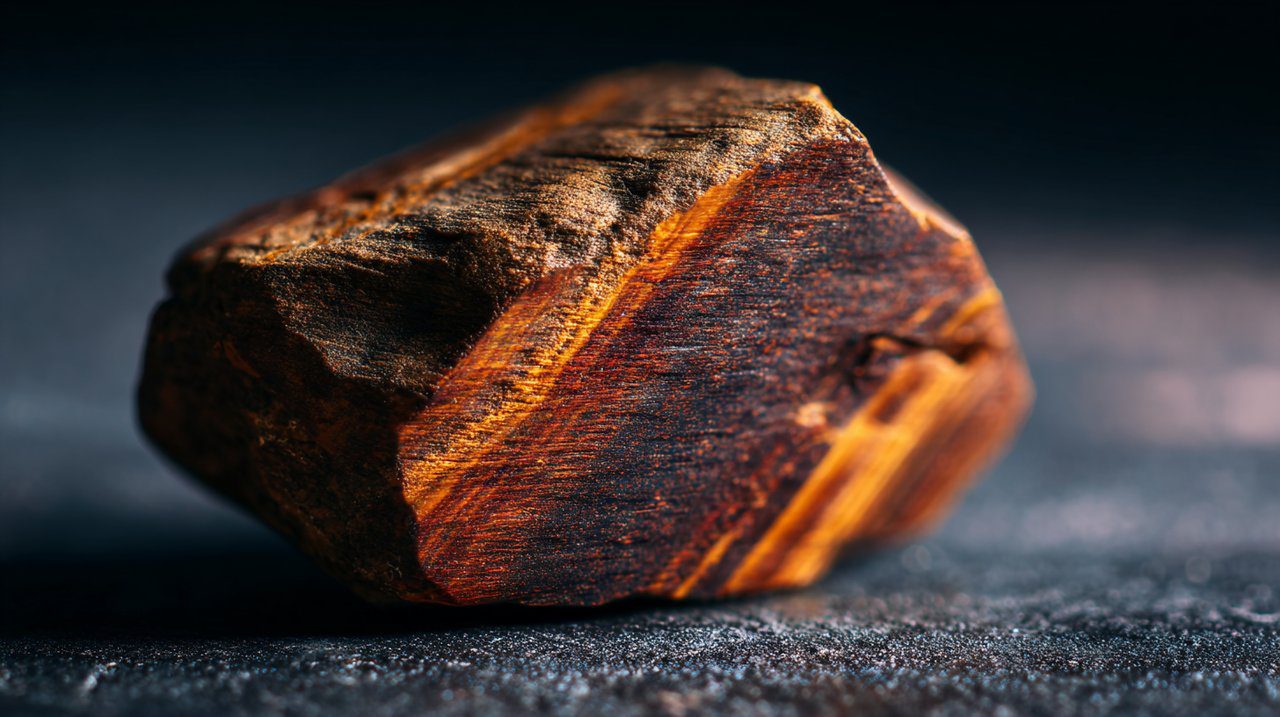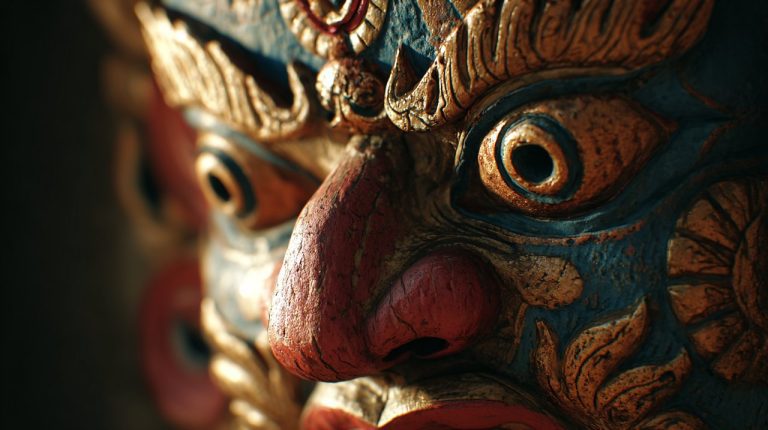Tibetan Turquoise: Soul of the Himalayas and Its Enduring Cultural Resonance
What alchemical process elevates a simple mineral beyond its geological origin, transforming it into a profound cultural touchstone and a vibrant spiritual conduit? For countless millennia, nestled within the formidable embrace of the Himalayas, a singular stone has achieved this remarkable transcendence. It has become not merely an adornment, but a sacred emblem, a steadfast protector, and a silent chronicler of an entire civilization’s journey. This is the compelling saga of Tibetan Turquoise, a gem whose luminous essence is deeply and inextricably woven into the very tapestry of Tibetan existence and spiritual practice.

Himalayan Whispers: The Enduring Allure of Tibetan Turquoise
Origins and Distinctive Hues
The genesis of Tibetan Turquoise unfolds deep within the Earth’s crust, sculpted by the singular geological forces endemic to the Tibetan Plateau. While turquoise from other global locales often presents a singular, pristine sky-blue, its Tibetan counterpart frequently reveals a far more intricate palette. Here, one discovers a captivating spectrum of blues and greens, frequently interwoven with a distinctive brown or black matrix. Far from being an imperfection, this natural web of host rock is, in fact, the stone’s unmistakable signature, imbuing each piece with a unique, organic character. It is precisely this authentic interplay of color and inherent pattern that bestows upon Tibetan Turquoise its distinctive warmth and profound earthy authenticity, setting it apart from its more homogeneous relatives.
A Stone Steeped in Legend
For the Tibetan people, Tibetan Turquoise transcends the realm of mere mineral; it is regarded as a living entity, profoundly imbued with ancient wisdom and potent protective energies. Its documented history stretches back millennia, long predating the advent of Buddhism in Tibet. Indeed, early nomadic cultures held this stone in profound reverence, attributing to it the power to ward off malevolent forces, attract prosperity, and ensure safe passage across the formidable mountain passes. This deeply ingrained veneration transformed the stone from a simple decorative item into a powerful, almost mystical amulet, much like many revered amuletos tibetanos, forging an unbreakable bond between its wearers and the vast, untamed spirit of the Himalayas. To wear or possess turquoise from Tibet thus became a tangible affirmation of one’s intrinsic connection to ancestral lands and venerable traditions.
Soul of the Land: Tibetan Turquoise in Culture and Spirituality
Sacred Symbolism and Protective Power
Within the intricate tapestry of Tibetan Buddhism, Tibetan Turquoise commands a preeminent status among precious gems. It is a profound symbol, embodying the ethereal purity of the sky and the restorative, cleansing power of water. Consequently, it represents the foundational virtues of wisdom, compassion, and spiritual evolution. Beyond its symbolic weight, the stone is widely believed to actively absorb negative energies, thereby shielding its wearer from physical harm and maladies. Crucially, this protective efficacy extends beyond the corporeal, working to safeguard the mind from detrimental thoughts and turbulent emotions, thereby cultivating a profound sense of inner peace and equilibrium. For countless individuals, a piece of Tibetan Turquoise serves not merely as an ornament, but as a tangible silent guardian, an unwavering reminder of core spiritual tenets, and an enduring bulwark against life’s myriad adversities.
From Rituals to Daily Life
The ubiquitous presence of Tibetan Turquoise throughout Tibetan culture is truly profound, reflecting its deep integration into every facet of life. One finds it adorning everything from the most elaborate ceremonial attire and sacred monastic decorations to humble everyday household items and prayer beads, such as a Buddhist mala. This widespread application underscores its multifaceted significance.
Its pervasive influence is evident in numerous contexts:
- Ritual Objects: It meticulously adorns altars, intricate mandalas, and various ritual instruments, unequivocally signifying their sacred nature.
- Traditional Dress: Seamlessly integrated into headpieces, necklaces, and belts, it is especially prominent during festivals and significant ceremonial occasions.
- Daily Adornment: Worn universally by men, women, and children as rings, earrings, pendants, or even a Buddhist necklace, often bestowed upon them from birth, signifying a lifelong connection.
- Medicinal Beliefs: Historically, it was finely ground into powders for traditional remedies, believed to possess tangible healing properties, further cementing its holistic role.
This deep integration into daily existence unequivocally affirms its role not merely as a precious commodity, but as an indispensable component of Tibetan identity and spiritual devotion.
The Art of Tibetan Turquoise Jewelry
The creation of Tibetan Turquoise jewelry stands as a powerful testament to centuries of refined artistic tradition. Tibetan artisans, with their unparalleled skill, typically set these exquisite turquoise stones in sterling silver, frequently embellishing them with intricate filigree work, vibrant coral, or other complementary semi-precious stones, including various Tibetan beads. The designs themselves are rarely arbitrary; they are profoundly symbolic, often incorporating revered motifs such as the endless knot, the serene lotus flower, or the potent protective dorje. Consequently, each piece of Tibetan Turquoise jewelry transcends simple ornamentation; it becomes a narrative in miniature, eloquently reflecting the artisan’s mastery and the rich cultural stories intrinsically embedded within the stone itself. These aren’t just decorative objects; they are tangible, resonant expressions of faith, ancestral heritage, and the wearer’s profound connection to the spiritual cosmos.
Authenticity and Aura: Navigating the World of Genuine Tibetan Turquoise

Key Characteristics of Authentic Stones
Discerning genuine Tibetan Turquoise necessitates a trained and perceptive eye, one acutely attuned to its inherent natural attributes. When evaluating authenticity, certain key characteristics consistently emerge as reliable indicators:
- Color Variation: Authentic pieces display a broad spectrum of hues, ranging from the purest sky blue to a rich, deep green, frequently exhibiting natural mottling or subtle banding within the stone itself.
- Matrix Patterns: Each stone presents unique, often intricate patterns of black, brown, or even gold veining—famously known as the ‘spiderweb matrix’-derived directly from the host rock. These are not flaws but distinct hallmarks of origin.
- Texture and Luster: Unpolished, the stone typically possesses a slightly waxy or subdued dull luster, which transforms into a subtle, inviting sheen once polished. Tactilely, genuine turquoise feels remarkably dense and cool to the touch.
- Hardness: It is comparatively softer than many other gemstones, registering between 5 and 6 on the Mohs scale, which means it can be susceptible to scratching.
A truly authentic piece of turquoise from Tibet will invariably showcase these organic variations, a direct reflection of its unique geological genesis.
Common Imitations and How to Spot Them
Regrettably, the immense popularity and value of Tibetan Turquoise have inevitably spawned a proliferation of clever imitations. Vigilance is key, and understanding the common forms of deception is paramount. Here are the most prevalent fakes one might encounter:
- Dyed Howlite: This white stone is artificially dyed blue, often betraying itself through an unnaturally uniform color and veining patterns that distinctly diverge from natural turquoise matrix.
- Reconstituted Turquoise: Composed of ground turquoise fragments mixed with resin, these pieces frequently exhibit an overly uniform coloration and a conspicuous absence of authentic matrix patterns. They may also feel notably lighter than genuine stone.
- Plastic or Glass: These are typically the easiest to identify due to their conspicuously light weight, an overly perfect, almost flawless appearance, and a distinct ‘plastic’ or ‘glassy’ tactile sensation.
- Chalk Turquoise: This refers to low-grade, highly porous turquoise that has been stabilized with a plastic resin and often dyed to enhance its color. It might present a waxy feel or an artificial, plastic-like sheen.
When evaluating any piece purported to be turquoise from Tibet, a meticulous examination for inconsistencies that betray its artificial genesis is crucial. In some instances, a discreet scratch test on an inconspicuous area (exercising caution and ensuring safety) can effectively reveal a dyed surface.
Caring for Your Sacred Gem
To truly preserve both the spiritual resonance and the intrinsic aesthetic integrity of your Tibetan Turquoise, diligent and proper care is not merely advisable, but essential. Consider these fundamental guidelines:
- Avoid Chemicals: Turquoise is inherently porous, making it highly susceptible to chemical reactions. Therefore, rigorously avoid contact with perfumes, body oils, lotions, and harsh cleaning agents, as these can irrevocably alter its natural coloration.
- Gentle Cleaning: For routine cleaning, employ only a soft, damp cloth and a very mild soap. Crucially, refrain from using ultrasonic cleaners or any abrasive materials, which can damage the stone’s delicate surface.
- Storage: Always store your turquoise separately from harder gemstones to prevent surface scratches. Furthermore, shield it from direct sunlight and abrupt, extreme temperature fluctuations, which can compromise its stability and appearance.
By assiduously observing these straightforward practices, you ensure that your sacred gem will retain its profound vibrancy and protective aura, serving as a cherished heirloom for generations to come.
Beyond Adornment: The Legacy of Tibetan Turquoise Gifts
A Timeless Connection to the Himalayas
To bestow or receive Tibetan Turquoise transcends the simple exchange of a beautiful object; it is, in essence, to share a tangible fragment of the Himalayas’ very soul. This gesture is deeply imbued with cultural reverence and profound spiritual significance. These remarkable turquoise gifts carry within them the ancient whispers of the mountains, the enduring wisdom of a remarkably resilient people, and the timeless, unwavering promise of protection and holistic well-being. Each individual piece serves as an unbreakable, tangible link to a profound and ancient heritage, thereby fostering an even deeper appreciation for the intricate interconnectedness of nature, human culture, and the universal spirit.
Choosing Meaningful Turquoise Gifts
When contemplating the selection of turquoise gifts, the underlying intention behind the offering becomes paramount. Whether one chooses a piece of exquisitely crafted Tibetan Turquoise jewelry for a cherished loved one, a small, polished stone for a friend navigating a period of introspection or seeking solace, or a traditional amulet intended for potent personal protection, the intrinsic meaning of Tibetan Turquoise invariably elevates the entire gesture. It transforms from a simple present into a powerful symbol: an emblem of enduring connection, a heartfelt wish for prosperity and good fortune, and a shared reverence for the profound, mystical beauty inherent in our world.
So, we return to our initial contemplation: what truly elevates a mere mineral into a cultural soul and spiritual conduit? As one holds a piece of this ancient, resonant stone, allow its profound history and potent spiritual energy to deeply resonate within. This resonance will inevitably deepen one’s understanding of its true, incomparable worth. To explore the profound, understated beauty of Tibetan Turquoise jewelry and its myriad artifacts is to invite these timeless treasures to enrich your life, not just with their unique aesthetic, but with their unparalleled heritage and profound spiritual grace.
💡 Frequently Asked Questions
Tibetan Turquoise frequently displays an intricate palette of blues and greens, often interwoven with a distinctive brown or black 'spiderweb matrix' from its host rock. This is unlike other global locales where turquoise often presents a singular, pristine sky-blue.
For the Tibetan people, it is regarded as a living entity, profoundly imbued with ancient wisdom and potent protective energies. It symbolizes wisdom, compassion, and spiritual evolution, believed to absorb negative energies, shield from harm, and cultivate inner peace. It is deeply integrated into rituals, traditional dress, and daily life.
Authentic Tibetan Turquoise exhibits color variations from sky blue to deep green, often with natural mottling or banding, and unique black, brown, or gold 'spiderweb matrix' patterns. It has a slightly waxy or subdued luster when unpolished, feels dense and cool to the touch, and registers between 5 and 6 on the Mohs scale.
To care for Tibetan Turquoise, avoid contact with perfumes, body oils, lotions, and harsh cleaning agents due to its porous nature. Clean it gently with a soft, damp cloth and mild soap. Store it separately from harder gemstones and shield it from direct sunlight and extreme temperature fluctuations.







